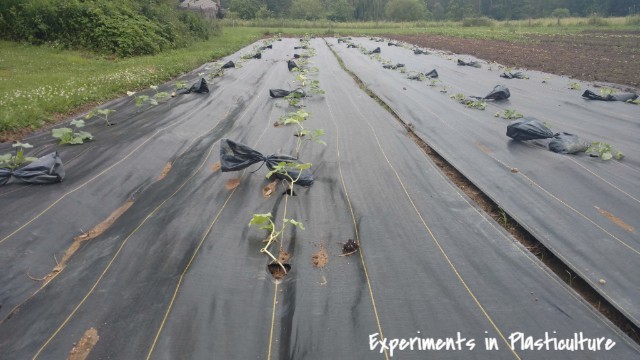When we started this journey 8 years ago, we were committed to growing veggies without the use of plastic mulch. We didn’t like the idea of the expense, the aesthetics, and most importantly, the waste. Fast forward several very weedy seasons, and our stance on plastic mulch has softened. Over the last few years, we’ve invested in several large rolls of black woven ground cover–a product with a lifespan of 5-10 years (as opposed to the stuff that only lasts one season). We now use it on a handful of crops that stay in the ground for a while and benefit from the extra warmth afforded by the plastic: strawberries, perennial herbs, melons, peppers, and eggplants.
This season, that short list has grown by one. After a bad crop last year and tricky tillage conditions this spring, we decided to experiment with winter squash in plasticulture. Winter squash can be notoriously hard to keep weed-free once the long vines take over the beds and the pathways. We’ve also lost a significant percentage of past crops to pest damage where the fruit comes in contact with the soil. Our hope is that the plastic mulch will help on both fronts.
The first couple weeks of this new system were a little touch-and-go. Strong winds blew several of the transplants under the ground cover, resulting in damaged leaves, a few broken stems, and some careful excavation. The plants seem to have rebounded nicely, though, and my despair has swung back in the direction of hope. Two weeks down, 12 weeks to go.

